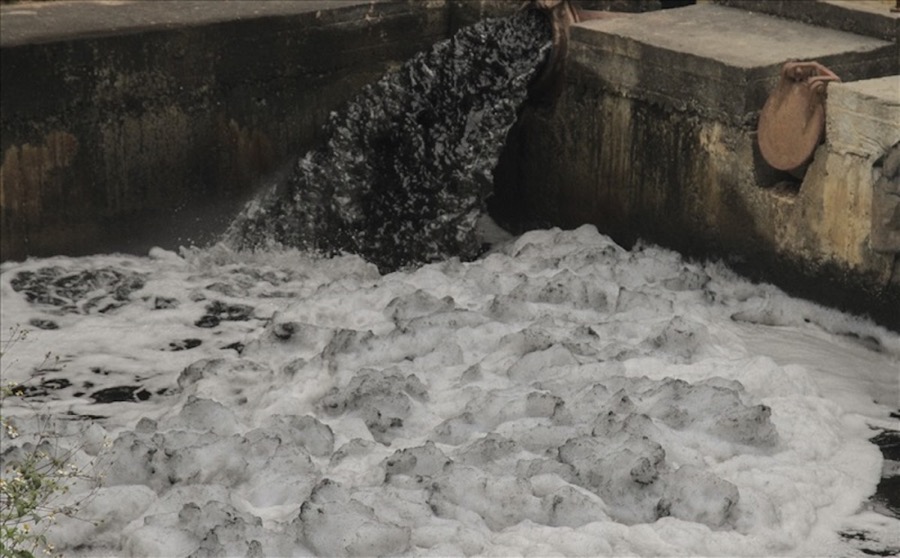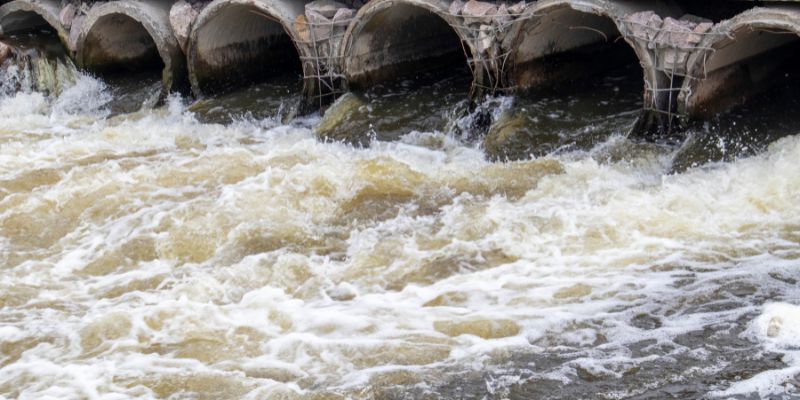Odor generation in wastewater treatment systems not only affects the surrounding environment but also serves as a clear indicator that the system may be malfunctioning. While mild odors can be considered normal in some cases, if not strictly controlled, they can lead to serious environmental, legal, and reputational consequences for businesses. This article analyzes the common causes of odor in wastewater, typical odor emission points, and the potential consequences of failing to address them in time.
1. Why Does Odor Occur During Wastewater Treatment?
Odor in wastewater is a common phenomenon, especially in areas rich in decomposing organic matter. In some cases, mild odor is a natural by-product — for example, biological smells from aerobic or anaerobic decomposition. This is an unavoidable part of operating a wastewater treatment system.
However, when the odor becomes strong, persistent, or spreads to the surrounding environment, it signals suboptimal system performance. This may be due to weak biological sludge, insufficient aeration, poor coagulation-flocculation, or stagnant flow. Such conditions not only reduce treatment efficiency but also create discomfort, provoke complaints, and risk penalties if environmental standards are exceeded.

Bad odors during wastewater treatment can be a sign that the system is not operating optimally
2. Main Causes of Odor in Wastewater
2.1 Anaerobic Decomposition of Organic Matter
When wastewater contains high levels of organic matter and lacks sufficient oxygen, microorganisms will shift to anaerobic decomposition. This process produces gases such as hydrogen sulfide (H₂S), methane (CH₄), and ammonia (NH₃) — all with distinct and unpleasant odors. H₂S smells like rotten eggs, CH₄ is odorless but flammable, and NH₃ has a pungent ammonia smell. These conditions often occur in long-standing storage tanks, stagnant areas, or clogged pipelines where oxygen supply is limited.
2.2 Uncontrolled Anoxic or Anaerobic Processes
Poor aeration or mixing in treatment systems can result in oxygen-deficient environments. This is particularly hazardous in primary clarifiers, equalization tanks, or aerobic biological tanks when not properly managed. Under such conditions, microorganisms are forced into anaerobic metabolism, releasing odorous and toxic gases. This issue is common in aging facilities, degraded systems, or plants operating beyond their design capacity.
2.3 Sulfur- and Nitrogen-Containing Compounds
In wastewater, sulfur-containing compounds such as sulfates and proteins are broken down by microorganisms, releasing H₂S — the source of the characteristic rotten egg odor. Similarly, the degradation of nitrogen-based compounds like urea or ammonia results in NH₃, creating a strong ammonia smell. If the system lacks effective ammonia removal or operates unstably, these gases will accumulate and escape, especially from sludge beds, clarifiers, or poorly maintained exhaust systems.
2.4 Treatment Chemicals or Wastewater Composition
Certain treatment chemicals may react with wastewater components and generate characteristic odors, such as chlorine (pungent), formalin (sharp), or volatile organic solvents. Additionally, wastewater from specific industries like food processing, paper manufacturing, tanning, or textile dyeing often contains complex organic compounds or additives with distinct odors. Without adequate pretreatment, these odors become difficult to control during the main treatment stages.

Causes of bad odors when treating wastewater
3. Odor-Prone Areas in the Treatment System
3.1 Collection and Equalization Tanks
These are the first points to receive wastewater from the source and often contain high organic loads and unstable pollution levels. In low dissolved oxygen conditions, wastewater easily turns anaerobic without proper mixing or aeration. Anaerobic bacteria then produce H₂S and NH₃, resulting in strong odors. These zones require special attention in terms of ventilation, aeration, and containment to prevent odor dispersion.
3.2 UASB and Anaerobic Reactors
UASB (Upflow Anaerobic Sludge Blanket) and other anaerobic reactors rely on anaerobic digestion processes that naturally produce CH₄ and H₂S gases. While integral to the treatment process, these gases, if not properly captured and treated, can escape and cause strong odors and explosion risks. Therefore, anaerobic reactors must have sealed gas collection systems, pipelines leading to scrubbers or flare systems, and tight control of gas concentration and pressure.
3.3 Sludge Storage Areas
After treatment, sludge is stored in drying beds, sludge holding tanks, or dewatering units. If the sludge is not quickly dried or left to sit too long, natural fermentation will occur, encouraging microbial decomposition and odor formation. Odors in these areas are usually strong, persistent, and widespread, especially during hot or humid weather. To control this, sludge must be promptly treated, stored with cover, and odor control measures like biological sprays or gas filters should be applied.
4. Consequences of Uncontrolled Odor in Wastewater
-
Localized Air Pollution: Odor disperses into surrounding areas, causing discomfort and affecting residents’ health, especially in communities near treatment facilities.
-
Complaints and Penalties: Public complaints may trigger sudden environmental inspections. If violations are found, the operator may face penalties under Decree 45/2022/NĐ-CP, with fines reaching hundreds of millions of VND.
-
System Risk: Odorous gases like H₂S and NH₃ can inhibit or kill beneficial microbes in biological tanks, reducing treatment efficiency and increasing the risk of technical failure.
-
Reputational Damage: Prolonged odor emissions lead to perceptions of environmental irresponsibility, damaging the operator’s brand image, particularly in facilities near residential or mixed-use industrial zones.
Controlling odor in wastewater treatment is not just a technical requirement but also a commitment to environmental and community responsibility. Understanding the root causes, identifying odor-prone areas, and implementing timely solutions help operators avoid legal risks, improve treatment performance, and maintain a positive public image. Investing in odor control solutions is a necessary step toward a safe, sustainable, and compliant wastewater treatment system.

